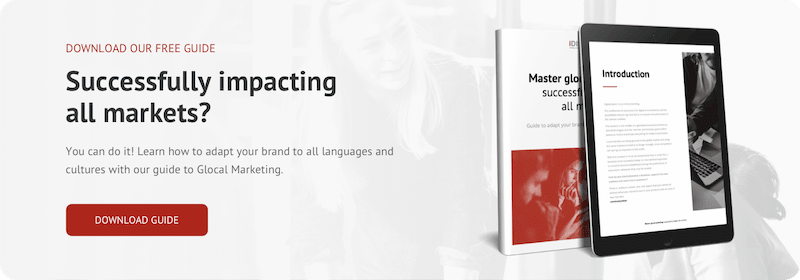When a company decides to open doors in other markets other markets when a company decides to open doors in other markets, it must take into account that each new territory has its own idiosyncrasy, with its own cultural traits, its own philosophy of life and certainly a sense of humor different from other territories and cultures.
The process of adapting a text to another language can be very different depending on the nature of the content to be translated and the objective to be achieved by adapting it to the new language.
There are several types of translation, and to determine which one best suits your content, it is vital to identify the needs and objectives of your project.
For example, when we talk about translation in the field of marketing and advertising, it is undoubtedly necessary to resort to transcreation.
Throughout this article you will discover what transcreation is, which projects require it and how it is applied.
take a pen and paper!
What is transcreation or creative translation?
Transcreation is a creative marketing translation, which aims to carry the intent, style and tone of a message across cultural barriers in order to elicit the same emotional reaction as the message in the original language.
In the field of marketing and advertising, the way we communicate and interact with another person changes according to language and culture, hence its great importance.
Of course, traditional translation also takes cultural factors into account and does not necessarily have to appear to be a literal terminological adaptation of the text, but in the field of transcreation, the distinguishing factor that carries the most weight is precisely the creative one. A good transcreation can help a brand's image a lot.
To transcreate, the translator must have knowledge beyond an excellent command of the language, including the mentality of the local buyer local buyer's mentality. Transcreation involves greater creativity and freedom because it aims to cause the same commercial impact as source texts, for example. As we said, the translated text aims to elicit the same reaction in the target audience as the source text does in the source country. This may require the translator to move far away from the original text in order to cause the same reactions in the new language and cultural context.
In the field of transcreation, both the ability to translate and the ability to apply creativity are essential. This creativity must be reflected in advertising copy in order to adapt products not only to other languages, but also to different cultures. You must have a clear vision of what identity and message you want to convey.
Thus, transcreating is the sum of translating and creating something new.
Some examples of real transcreations
have you ever wondered why there are brands that are successful all over the world whose claims are claims y slogans and slogans succeed in all markets?
Not coincidentally, transcreation plays a key role in this. A great example is Apple, as they hit the nail exactly on the head with their translation of their claim claim in the launching of their Iphone SE. This device could be purchased in black, white and red, and this is how they said it in their English advertising: "Comes in Black. White. And Pow" for the United States.
However, in their advertising for Spain they translated it as: "It comes in black. En blanco (In white). Y olé" Transcreating is translating? Of course not, it's about creating a presence for your brand's image all over the world.
The Haribo brand also perfectly adapted its campaign to the Spanish audience, creating the slogan "Live a magical world, come to the Haribo world". The fact that you read it with the musical intonation that the ad has denotes a good job of transcreation.
Sometimes, however, transcreation means not translating slogans. This is a technique used by many brands, making these phrases, originally conceived in other languages, become integrated into our own, even if we do not speak the original language. An example of this is Nike's slogan, "Just Do It"; or McDonald's, "We're loving it".


Differences between translation and transcreation
The biggest difference between a transcreation and a standard translation is that the latter tends to be more literal and the target text maintains the most faithful form possible to the source text, respecting the linguistic equivalence in the new language.
In creative translation or transcreation, however, this does not always work. In the slogans, claims sales copy and other types of marketing content creativity plays a key role. the original text may include untranslatable puns or puns that do not have the same meaning in the target language. In order for the message to produce the same reaction in all its readers, the cultural factors of the receiving country are taken into account, appealing to their emotions and senses.
The transcreator must capture the essence of the message to recreate it in a way that meets the expected advertising objectives, being able to reproduce the concept, tone and intentionality of the original text.
This implies that the person in charge of the transcreation work cannot only have translation skills. As we said before, you must understand the marketing intentions and translate them into your creative activity so that the target culture is perceived as it is reflected in the original, but changing the cultural and linguistic nuances necessary in each case Users do not search in the same way in one market or another, since the search intention from one person to another varies, especially depending on their culture.
With this in mind, let's briefly review the key differences between standard translation and transcreation:
- Transcreation requires an extra linguistic creativity
- Transcreation requires understanding and being aligned with the marketing objective
- Transcreating involves persuasive writing that generates emotional impact
- Transcreation must maintain the brand message
- The working approach of plain translation and transcreation is different
- The profile of the professionals who know how to transcreate is also different
Although these are general distinctions between transcreation and standard translation, it should be noted that they are not always necessary to the letter. An original marketing text can also have an effective direct translation, which does not require transcreation to persuade and generate emotional impact, as long as the original phrase can be translated as it is to the target audience.
Marketing-specialized translation
Given these particularities, what is certain is that, if your project is related to the commercial, marketing, communication or advertising field, it is very likely that you will require a translation service specialized in marketing, that is, a team with the capacity to transcreate.
Choosing the right the right translation team is no easy task. The translation provider must be able to adapt to the particularities and needs of the projects, and to apply the most suitable solutions in each case.
These professionals must have the ability to capture the essence of the company and provide a faithful adaptation to the brand in the target country without losing sight of the business objective and mission, marketing and sales strategies.
At iDISC, our teams are specialized in different industries and types of content, and are composed of professional native translators from more than 40 languages, language variants and target markets, trained to translate and transcreate as needed.
If these reasons have convinced you that we are the perfect partner for your project, feel free to get in touch.





